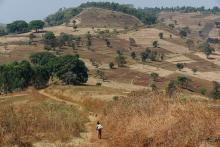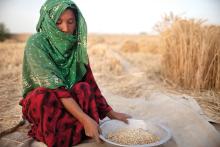Land Library Search
Through our robust search engine, you can search for any item of the over 73,000 highly curated resources in the Land Library.
If you would like to find an overview of what is possible, feel free to peruse the Search Guide.
/ library resources
Showing items 46 through 54 of 1469.The researchers have used evidence from Mato Grosso, Brazil, to show that changes in agricultural output stemming from the sensitivity of cropland area and cropping frequency to interannual climate variability are of similar magnitude to agricultural output changes associated with the sensitivity
How Africans access – or ‘own’ – their landholdings is a matter of profound importance for the continent’s future. It touches on social welfare as well as prospects for economic development.
The report's main objective is to provide key lessons from the sustainable urban tourism project through the analysis of different enabling conditions and obstacles that determined the course and the final outcome of the initiative.
Population growth leads to growing land scarcity and landlessness in poor agrarian economies. Many of these also face severe climate risks that may increase in the future.
The purpose of this study was to determine the financial cost of irrigation water in the Jordan Valley and the corresponding impact of higher water prices on farming. The analysis shows that JVA needs significant tariff increases to be able to attain a more financially sustainable footing.
Results demonstrate that the effects of management on cropland can be beneficial for carbon and nutrient retention without risking (large) yield losses.
Fishery plays a crucial role in poverty and hunger alleviation. It is therefore all the more important to secure the long-term conservation of fish stocks as a natural resource and to ensure fair access to them.
The global demand for fish and fish products is continuously increasing. However, fisheries management is still insufficient, leading to over-exploitation, illegal fishing and massive post-harvest losses. Our authors describe what has to be done.
Aquaculture holds a big potential to satisfy the growing demand for aquatic food. Setting out from lessons learnt in past development projects, our author describes what fish farming systems must look like to fit the needs of smallholders and the environment.




